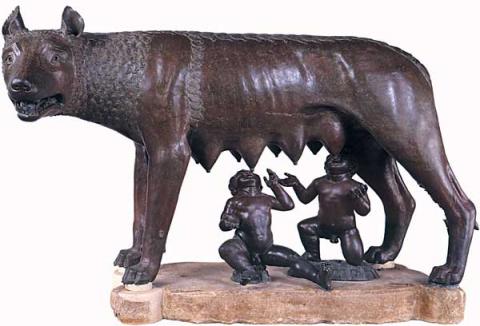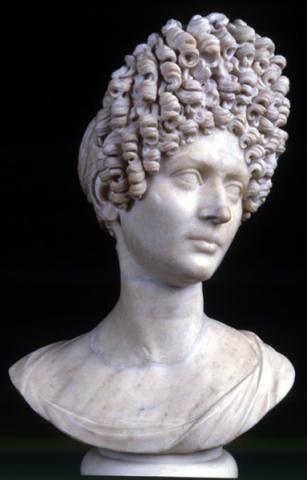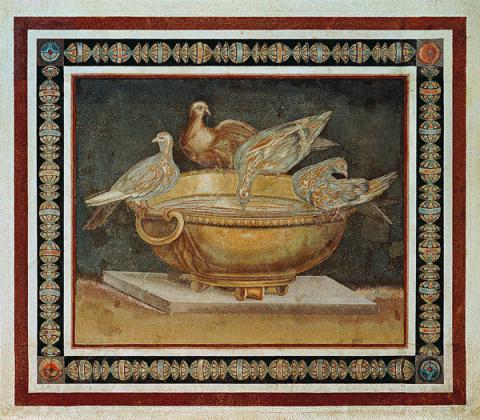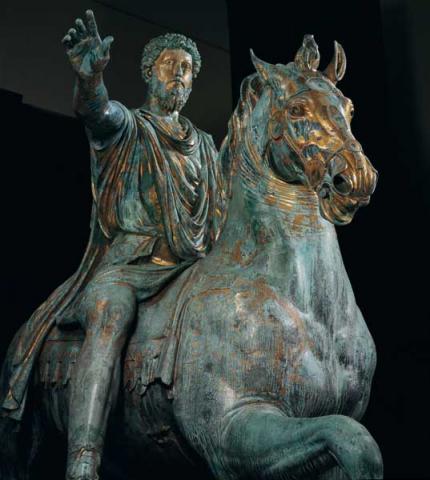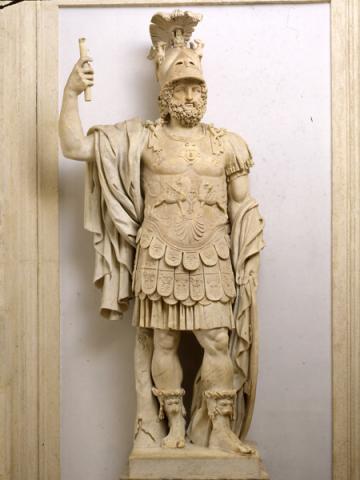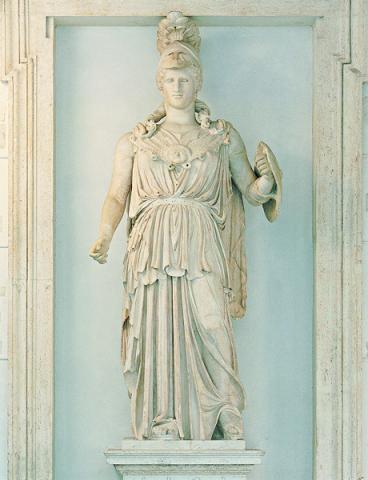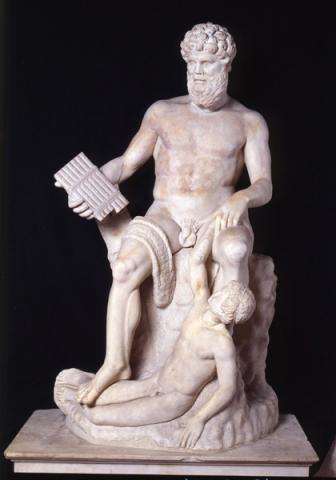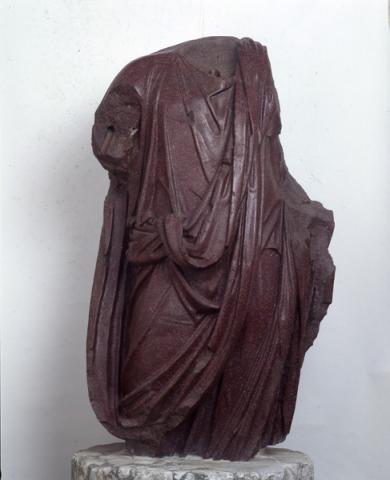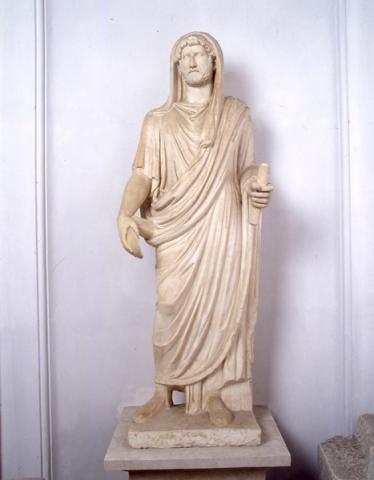Lobby
Along the walls of the long porticoed ground-floor corridor opening onto the Courtyard there are large niches with statues, including colossal representations of Minerva and Mars.
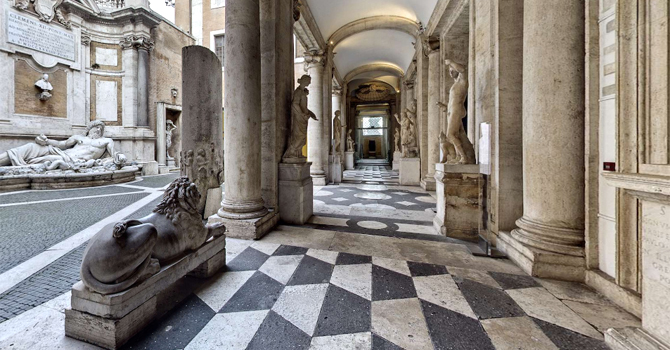
From an architectural perspective, the space is divided into niches and false doors, enlivened with columns leaning against the walls; two ornamental conchs complete decoration.
Among the most notable sculptures are:
- the “Pyrrhus”, or the colossal statue depicting Mars in military dress, from the Forum Transitorium, a Flavian copy of the original cult statue in the temple of Mars Ultor in Augustus’ Forum;
- the Statue of Minerva, a copy after the Athena Parthenos by Phidias (fifth century BC); the colossal sculpture was discovered under Pope Paul III (1534-1549) and it was originally intended to decorate the niche at the centre of the stairway of Palazzo Senatorio, later it was replaced by the porphyry sculpture still in place;
- the statue of the emperor Hadrian as Pontifex Maximus, with head veiled;
- the statue of Faustina Major as Fortuna
Around the niches where the sculptures stand there are Roman inscriptions, mostly of funerary character.


























